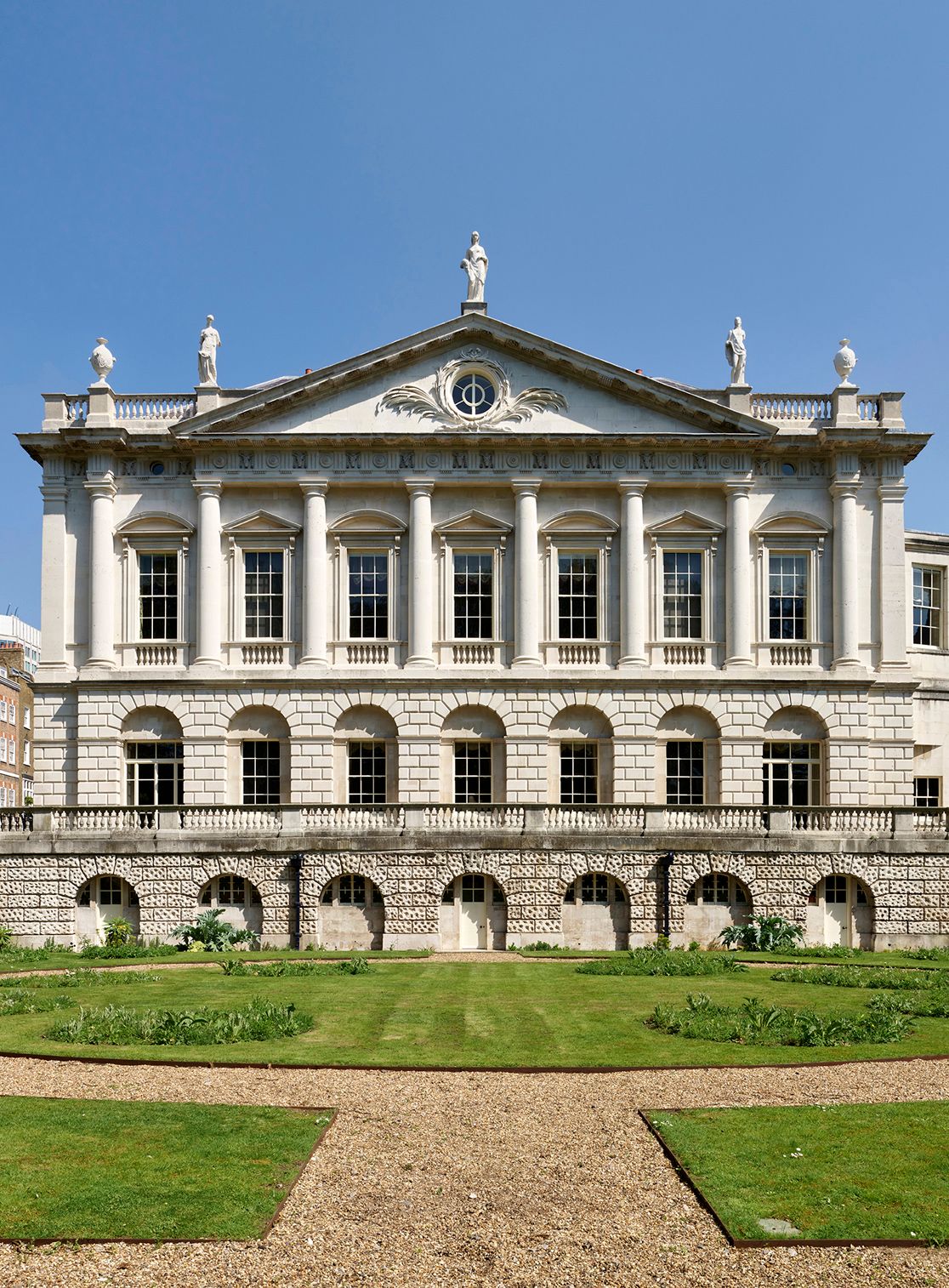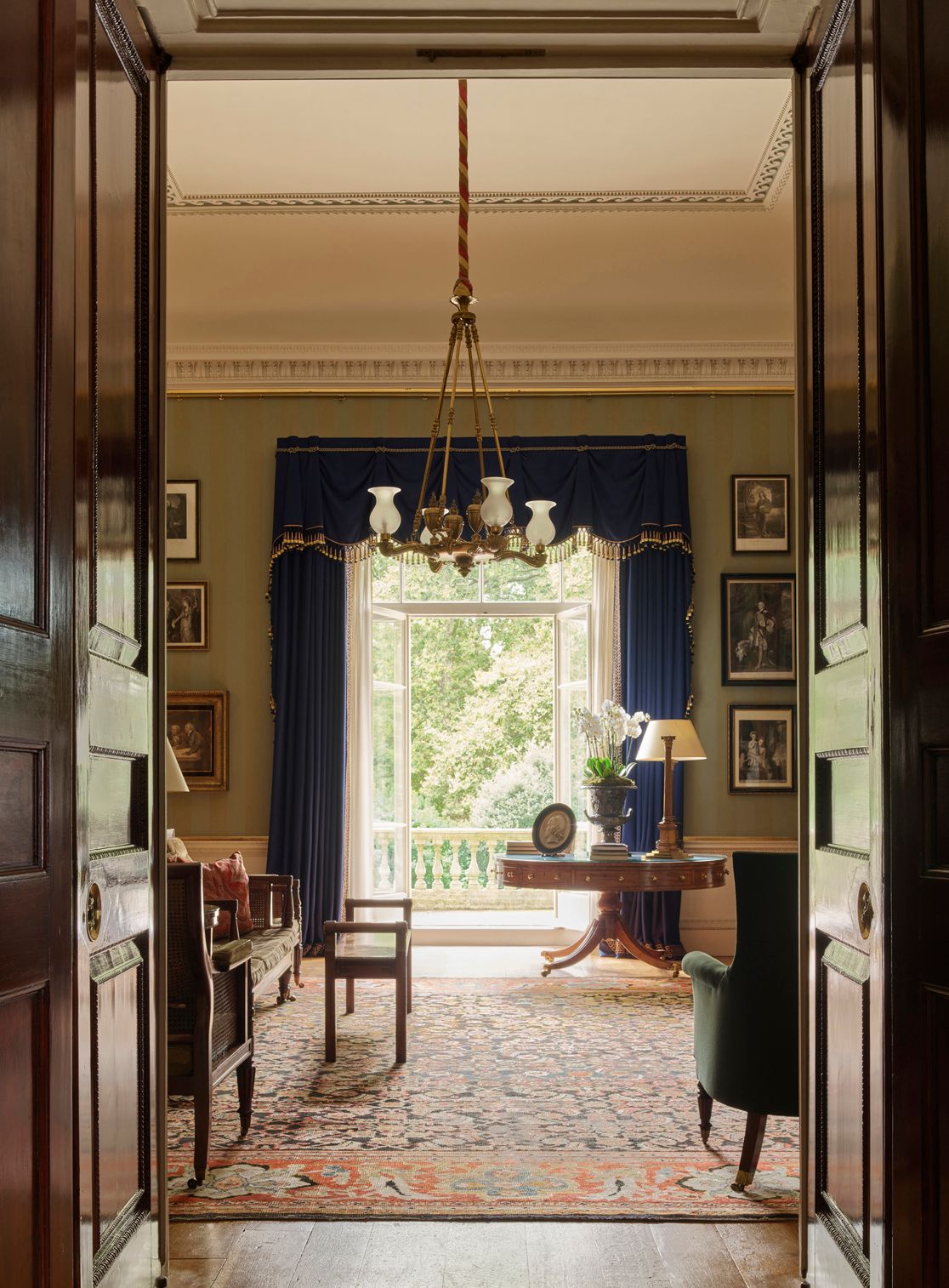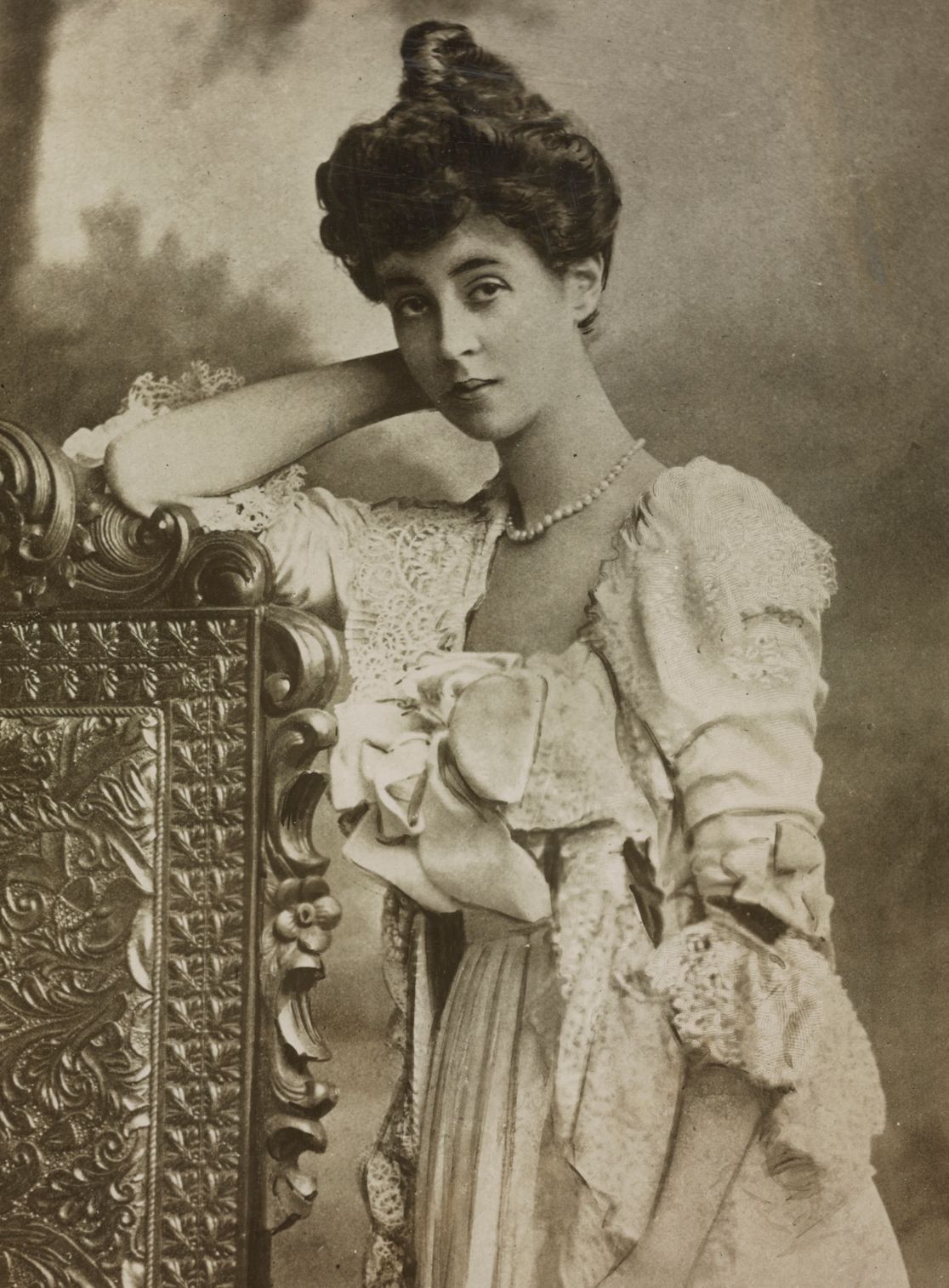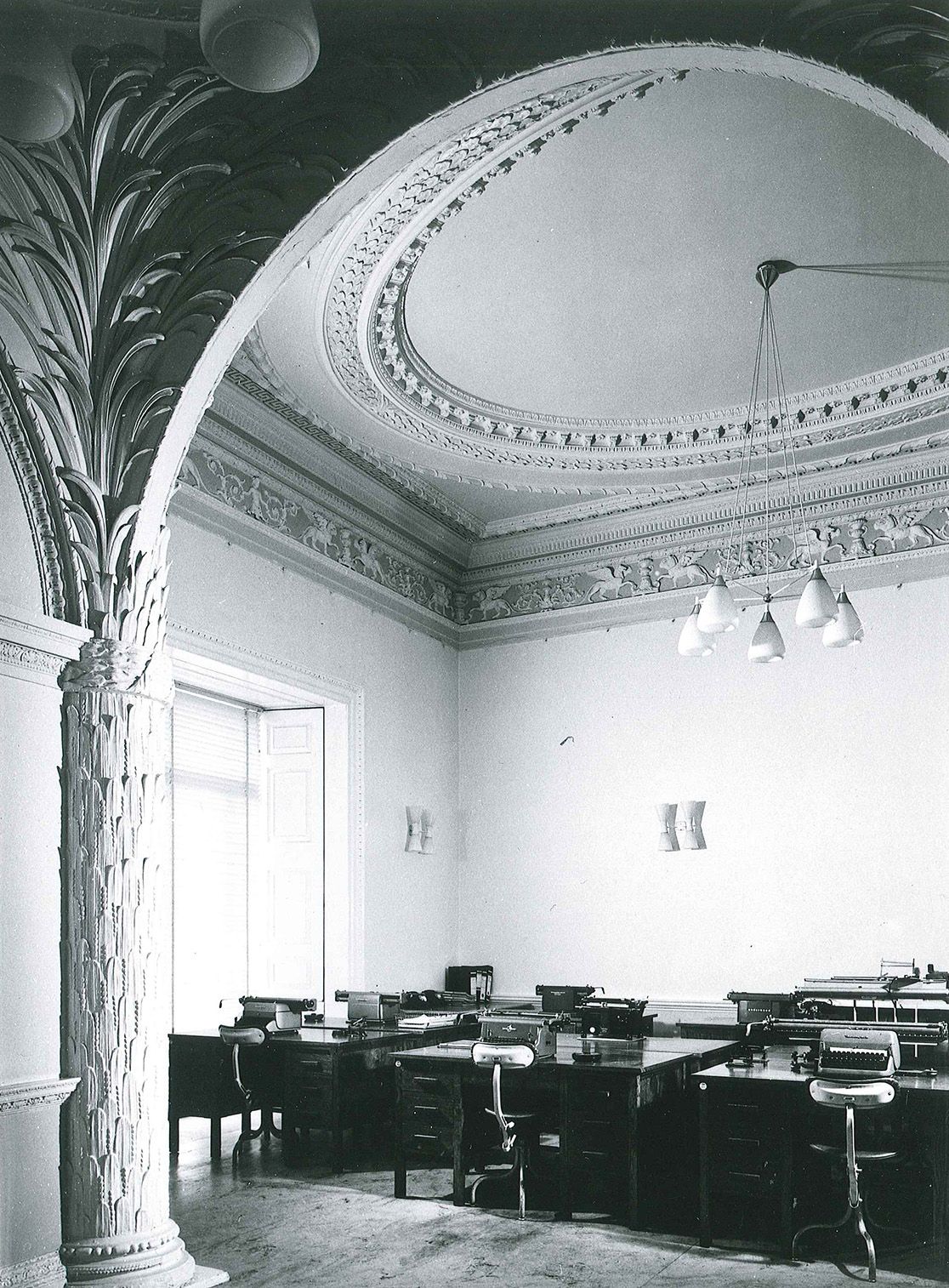Building Spencer House
Spencer House was begun in 1756 for John, later First Earl, Spencer and his wife Georgiana, nee Poyntz. They had married in 1755 and their relationship was a rare love match. Despite inheriting a large fortune and numerous houses, John Spencer lacked a London property of suitable grandeur and so the young couple began construction of a splendid new house in St James’s, overlooking Green Park.
The house would provide the Spencers not only with a family home in the city, but a venue for lavish entertaining and the display of their growing art collection.
The main façade overlooking Green Park is faced in Portland stone and consists of a giant attached Doric portico above an arcaded base. The pediment is topped with statues of Ceres (goddess of corn and associated with food and plenty), Bacchus (god of wine and a symbol of hospitality) and Flora (goddess of gardens and flowers). It therefore resembles a classical temple, dedicated to hospitality, love and the arts.
The street front to St James’s Place is plainer and was originally meant to feature a pair of matching pavilions at either end. However, the Spencers had difficulties acquiring the plot on the east side and this pavilion was never built, resulting in an asymmetrical façade.
As their architect, the Spencers chose John Vardy who had worked under the famous architect and designer William Kent on nearby Horse Guards in Whitehall. Vardy was still heavily influenced by the Palladian style which had dominated British design during the first half of the eighteenth century but by the 1750s was beginning to seem outdated.
Therefore, Vardy was only able to complete the outside of Spencer House and the decoration of the ground floor rooms before he was side-lined in favour of James ‘Athenian’ Stuart.
Stuart had recently returned from Greece where he had been recording the ancient monuments. He was to introduce many Greek-inspired details into his designs for the first floor rooms of Spencer House, becoming a pioneer of the new neoclassical style. As a result, Spencer House contains some of the earliest fully realised neoclassical interiors in England. Stuart, however, was a slow worker and it wasn’t until 1765, ten years after the start of construction, that Spencer House was finally complete.
The House Updated
Spencer House underwent significant alterations after the death of the First Earl Spencer in 1783. In 1785, the Second Earl engaged Henry Holland, designer of Carlton House, the Prince Regent’s new palace in Pall Mall, to bring Spencer House up to date. To improve circulation and increase reception space, Holland connected the Ante Room (previously a self-contained family dining room) to the adjoining Library and installed French windows in the Library and the Palm Room to provide access to the terrace. Holland also made changes to the decoration of the Dining Room, converted the Palm Room into a Library for the Earl’s famous collection of early printed books and brought in contemporary furniture in the French Louis XVI style. The garden was created in 1797 after the Crown finally agreed to lease a strip of land from Green Park to the residents of St James’s Place.
The house remained relatively unchanged until 1846 when the Fourth Earl Spencer commissioned Philip Hardwick, architect of the Euston Arch, to refurbish and essentially ‘Victorianise’ the house. Over the next ten years, the Georgian sash windows were replaced with plate glass, patterned carpets and various wallpapers were installed in the ground floor rooms and gas lighting was introduced. Stuart’s neoclassical rooms on the first floor, however, were maintained as they were.
In 1873 the Fifth Earl Spencer employed Frederick Sang to carry out a sumptuous scheme of decoration devised by the Parisian decorator Barbier in the Ante Room, Library and Dining Room.
The House To Let
From 1883 onwards, the Spencers’ income began to suffer as a result of the agricultural depression which began in the late 1870s. From then on, the family lived at Spencer House only intermittently while the building was leased to a succession of wealthy tenants.
Some of the more memorable of these tenants included the self-made millionaire Barney Barnato who was soon to lose his fortune and die in mysterious circumstances, falling over the side of a cruise ship; the Duke of Marlborough and his unhappy wife, the great American heiress Consuelo Vanderbilt, who gave birth to her son in Lady Spencer’s Room; and the newly married Prince Christopher of Greece whose wife, Nonie May Stewart, was tragically to die at Spencer House in 1923 after being diagnosed with cancer. An immensely wealthy Austrian nobleman called the Baron de Forest rented the house on a long-term basis between 1905 and 1914.
On the Fifth Earl’s death in 1910, his brother inherited as the Sixth Earl and occupied the house for a short time between 1914 and 1916 before offering it rent-free to the government for the remainder of the First World War.
There was a brief period of revival for the house when the Seventh Earl and his family moved back in 1923. The Earl, who was a Fellow of the Society of Antiquaries and the Royal Society of Arts, was passionate about the house and its history and undertook a campaign of redecoration to return the State Rooms to something closer in spirit to their original Georgian appearance.
Nonetheless, by 1926 financial pressures again forced the Spencers to move out, this time for good. Fortunately, the Seventh Earl did not sell the house as so many of his contemporaries were doing, but let it again, this time to a commercial tenant, the Ladies Army and Navy Club. In doing so he saved Spencer House from sharing the fate of so many other great London houses which were sold and demolished to make way for new hotels and office blocks.
Commercial Tenants
The Ladies Army and Navy Club occupied Spencer House from 1927 until the start of the Second World War. The Club built a two-storey extension to the south and east wings to provide bedrooms for its members and enclosed the terrace with a large glass conservatory.
Concerned for the safety of the house during the Blitz, in May 1941 the Spencers sent workmen to remove architectural fixtures from the State Rooms, including doorcases, chimneypieces, chair rails and even skirting boards, and bring them back to Althorp. Many of these fixtures were eventually installed in the rooms at Althorp where they remain today. Even as this removal work was being carried out, a bomb fell close to Spencer House and the force of the blast caused the ceiling of the Painted Room to collapse.
After the war, Spencer House was briefly the home of Christie’s auctioneers while their bomb-damaged premises in King Street were being rebuilt. The hastily tidied up State Rooms were put to use as sale and exhibition rooms.
Christie’s were succeeded in 1956 by the British Oxygen Company who engaged the architects Robert Atkinson & Partners to refurbish the house. Glass partitions were used to divide the larger State Rooms into individual offices, a high-speed lift was installed in the Entrance Hall and the internal courtyard was filled with service infrastructure. However, the Painted Room was restored and the damaged ceiling reinstated.
Between 1963 and 1981, the Intelligence Unit of the Economist magazine took over the lease and the State Rooms were again put to use as offices.
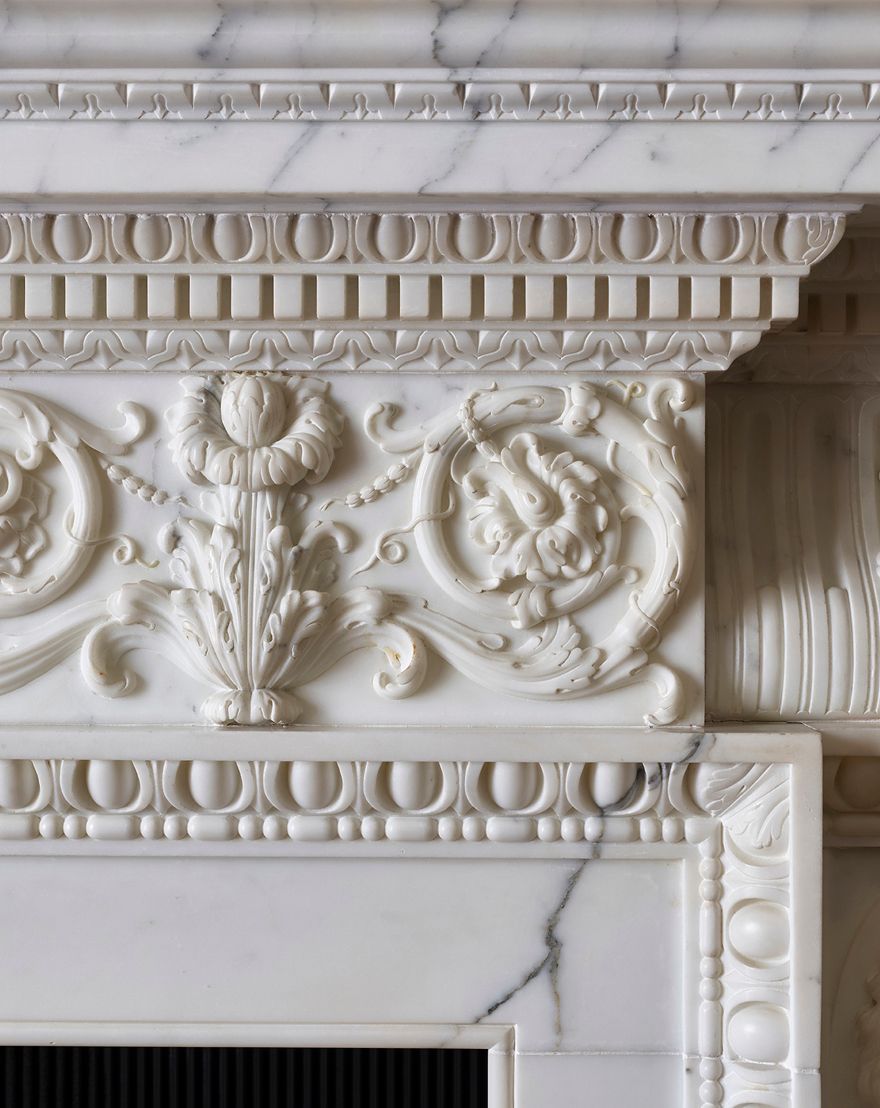
History
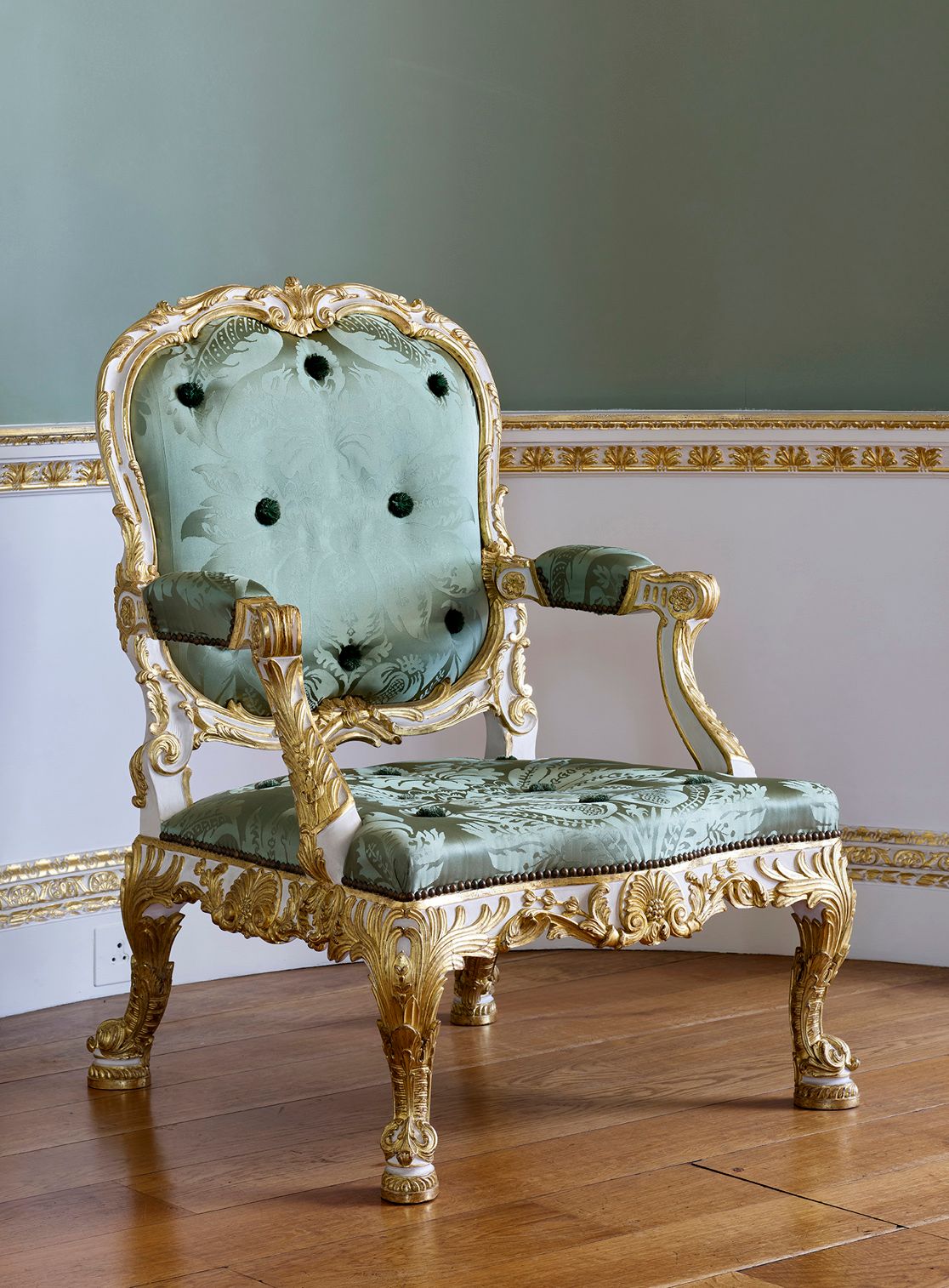
Search the Collection
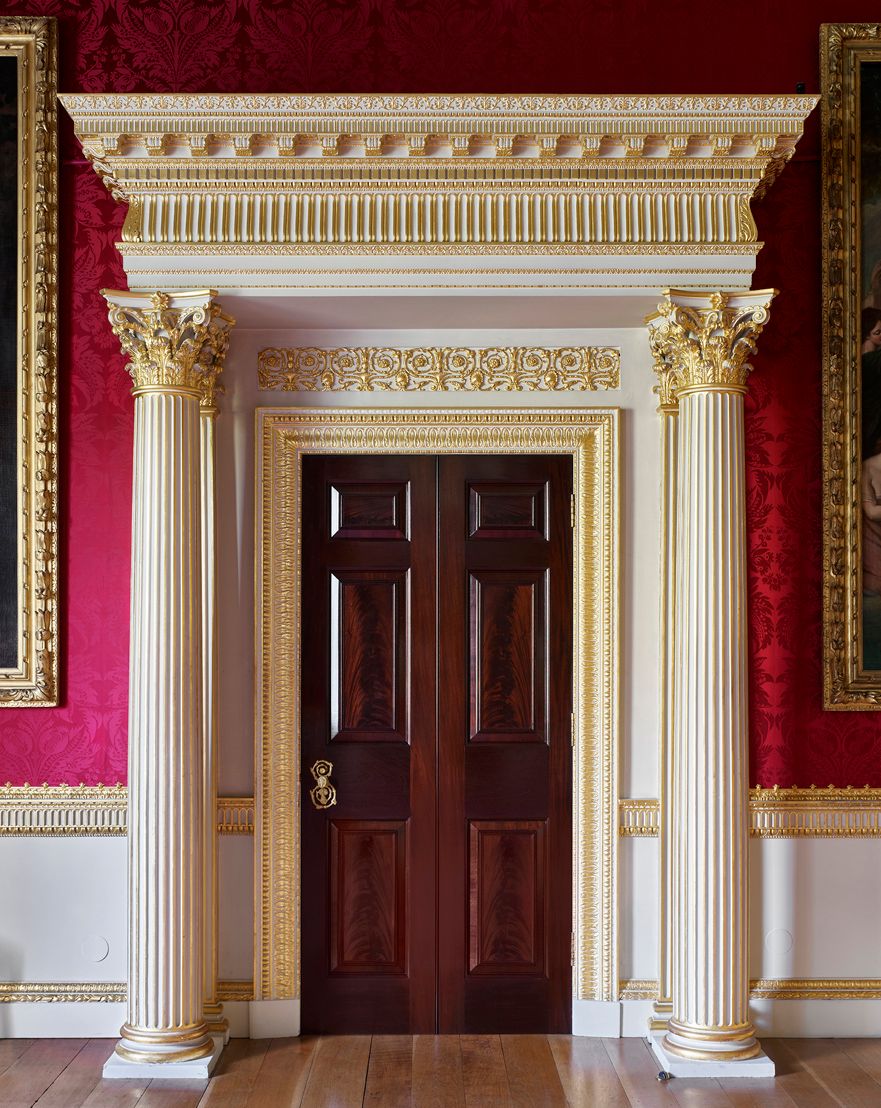
Book a Tour

Sign Up to our Newsletter
Sign up to our newsletter if you would like to receive updates about the house and details of any upcoming special tours and public events.
